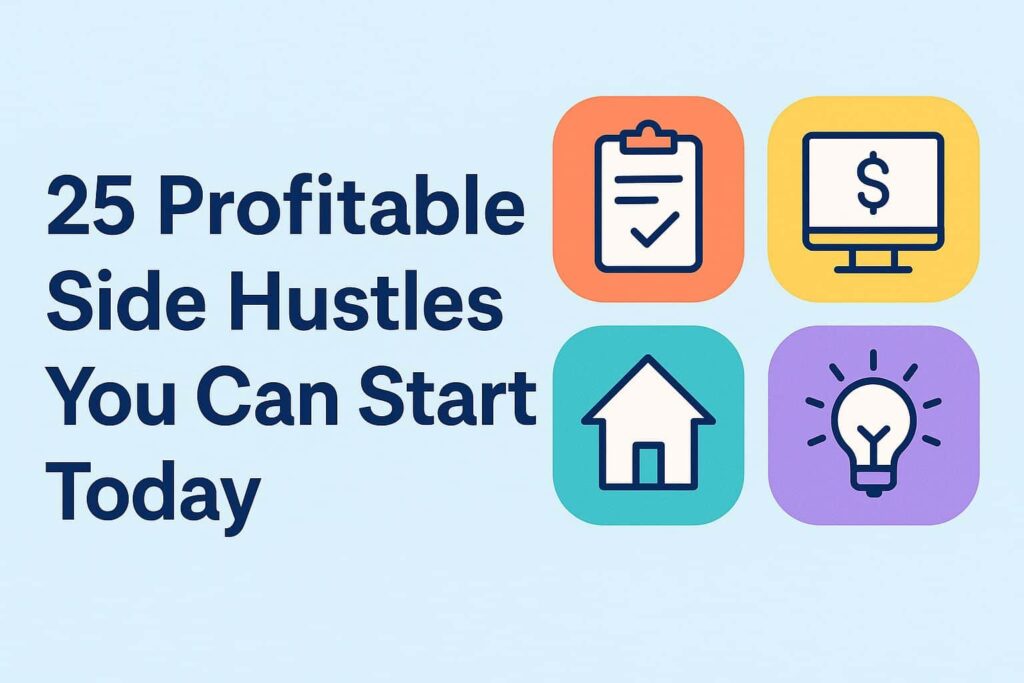Why E-books Are a Growing Side Hustle
In today’s digital world, more people are searching for flexible ways to earn income online. For those who enjoy writing, E-books offer one of the most promising opportunities. Unlike traditional publishing, creating an e-book does not require large investments or connections with publishing houses. With the rise of self-publishing platforms such as Amazon Kindle Direct Publishing, Apple Books, and Google Play Books, writers can easily reach global audiences. Many writers report earning up to $7,500 a year from their e-book sales, turning their passion into a reliable stream of side
Why E-books Can Be a Smart Source of Extra Income
There are several reasons why E-books stand out as a practical side hustle:
• Low entry cost: You don’t need physical printing or shipping.
• Global reach: Your book can be purchased by readers worldwide, 24/7.
• Passive income: Once published, an e-book can continue to generate sales for years with little additional effort.
• Creative freedom: You can write about your passions, expertise, or even fiction that inspires readers.
For many, the combination of accessibility and long-term earning potential makes e-books an attractive choice for building side income.
Step 1: Choosing the Right Topic for Your E-book
Every successful e-book begins with the right idea. Selecting a topic that aligns with both your interests and your audience’s needs is crucial.
• Non-fiction opportunities: How to guides, personal finance, health, fitness, recipes, or productivity.
• Fiction opportunities: Romance, mystery, science fiction, and fantasy genres often sell well in digital format.
• Evergreen topics: Choosing a subject that remains relevant for years ensures steady long term sales.
Writers should also analyze trends using tools like Google Trends and Amazon Best Sellers to understand what readers are actively searching for.
Step 2: Writing and Structuring Your E-book
Good content sells. A strong e-book requires planning and attention to detail.
1. Outline before writing: Create chapters and subtopics to guide your content.
2. Keep it clear and engaging: Readers prefer content that is easy to follow, even in complex subjects.
3. Enhance with visuals: Charts, images, or infographics can add value, especially in non fiction e-books.
4. Professional editing: Investing in editing or proofreading services can improve quality and credibility.
The better your writing and organization, the more likely readers are to leave positive reviews helping your e-book gain visibility.
Step 3: Publishing Platforms for E-books
One of the most appealing aspects of self publishing is the variety of platforms available. Writers can distribute their work globally with just a few clicks.
• Amazon Kindle Direct Publishing (KDP): The most popular option, giving access to millions of readers.
• Apple Books: Great for reaching iPhone and iPad users.
• Barnes & Noble Press: A strong choice for U.S. based audiences.
• Google Play Books: Expands reach to Android readers.
• Self hosting on your website: Offers maximum control and profit margins.
Many writers choose Amazon KDP first because of its large customer base, but diversifying across multiple platforms can increase exposure and revenue.
Step 4: Pricing Strategies for Your E-book
Finding the right price is essential for balancing affordability and profit.
• Start low: Many beginners launch their first e-book between $2.99 and $5.99.
• Promotions and discounts: Limited time deals attract more readers.
• Free first book strategy: Offer your first e-book free to build an audience, then charge for sequels or related titles.
Smart pricing, combined with effective promotion, helps build momentum for long term earnings.
Step 5: Marketing and Promoting Your E-book
Publishing an e-book is only the beginning. To reach $7,500 a year, consistent marketing is essential.
• Social media promotion: Platforms like Instagram, Pinterest, and TikTok are powerful for reaching new readers.
• Content marketing: Blogging, podcasting, or YouTube videos can drive traffic to your e-book.
• Email lists: Building an email list gives you a direct audience for future releases.
• Collaborations: Partner with influencers or other writers to cross-promote your work.
A strong promotional plan ensures that your e-book does not get lost among thousands of titles online.
Example Earning Scenario with E-books
Let’s look at a realistic example of how writers can reach $7,500 in yearly income:
• Average e-book price: $6
• Monthly sales target: 100 copies
• Monthly revenue: $600
• Yearly total: $7,200 (close to the $7,500 mark)
⚠️ Disclaimer: These numbers are for illustration only. Actual earnings depend on the quality of the e-book, the marketing efforts, and reader demand. Some writers earn less, while others generate significantly more.
Challenges to Keep in Mind
While the opportunity is real, there are also challenges:
• High competition: Thousands of new e-books are published every day.
• Marketing demands: Writing is only half the job; promotion is critical.
• Time investment: Quality books take weeks or months to write.
Recognizing these challenges helps writers prepare and create realistic expectations about their side hustle journey.
Turning Passion into Income with E-books
For writers who want to transform their passion into income, E-books provide one of the most accessible and rewarding opportunities. With minimal costs, global reach, and the potential for passive income, publishing e-books can be a smart way to build a sustainable side hustle.
By choosing the right topic, writing high-quality content, publishing on trusted platforms, and marketing effectively, writers can realistically aim for $7,500 in annual income. Whether you are an aspiring author or someone looking for a new side hustle, e-books may be the perfect way to achieve both creative expression and financial growth.
You can start publishing your first E-book on Amazon KDP, which is the most popular platform among new writers.https://kdp.amazon.com/
You can read another article in the Digital Assets category.https://groviest.com/ai-driven-digital-assets/


